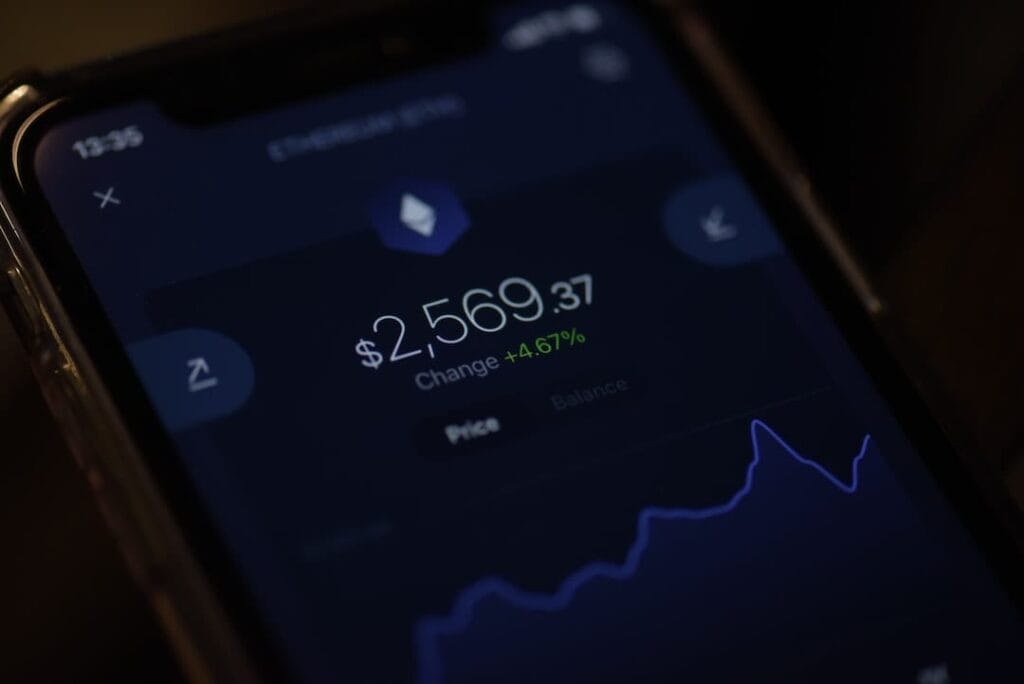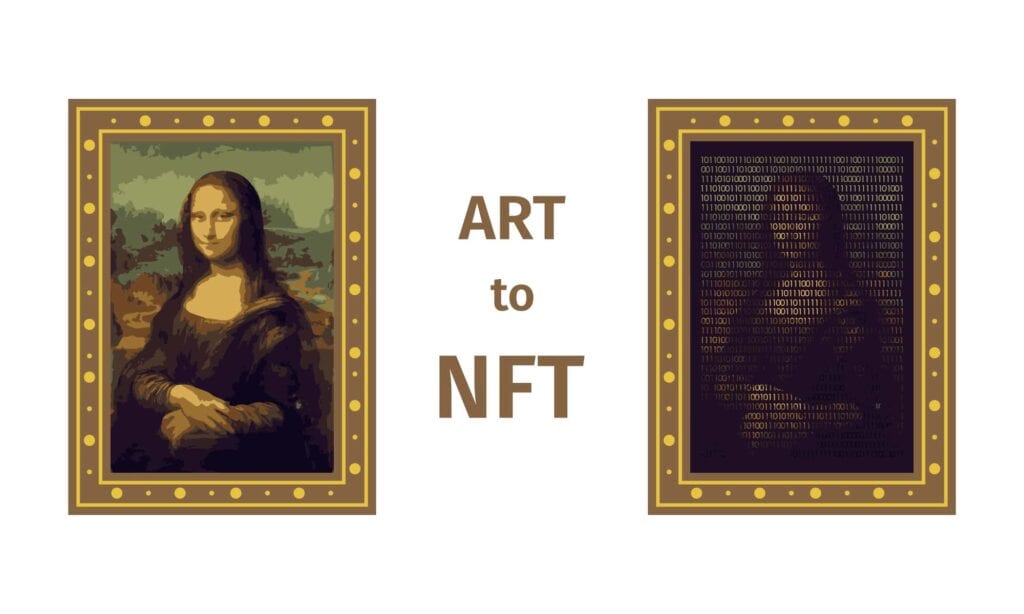Decentralized Finance, or DeFi, is a term that has gained significant attention in the world of finance and technology in recent years. It refers to a system of financial applications and services that are built on blockchain technology and operate without the need for intermediaries or central authorities. In other words, DeFi aims to create a decentralized financial ecosystem that is open, transparent, and accessible to anyone with an internet connection.
Disclaimer: This information is general in nature and for informational purposes only. It is not personal financial advice and has not taken into account your personal financial position or objectives. Make sure to refer to a licensed financial or tax advisor.
The concept of DeFi is not entirely new. It can be traced back to the early days of cryptocurrencies, with the creation of Bitcoin in 2009. However, it was not until the emergence of Ethereum in 2015 that the potential for decentralized finance truly began to be realized. Ethereum introduced the concept of smart contracts, which are self-executing contracts with the terms of the agreement directly written into code.
The importance of DeFi in the current financial landscape cannot be overstated. Traditional financial systems are often centralized, with banks and other financial institutions acting as intermediaries and gatekeepers. This can lead to inefficiencies, high fees, and limited access for individuals who do not meet certain criteria. DeFi aims to address these issues by providing a more inclusive and accessible financial system that is not controlled by any single entity.
Table of Contents
Key Takeaways
- Decentralized Finance (DeFi) is a new financial system that operates on a decentralized blockchain network.
- DeFi offers several advantages over traditional finance, including transparency, accessibility, and lower fees.
- Cryptocurrencies play a crucial role in DeFi, serving as the primary means of exchange and collateral.
- While DeFi offers significant potential for earning passive income, it also comes with risks such as smart contract vulnerabilities and market volatility.
- The top DeFi platforms to consider include Uniswap, Aave, Compound, and MakerDAO, among others.
Understanding the Basics of DeFi
To understand how DeFi works, it is important to grasp its key components and how they interact with each other. At its core, DeFi relies on blockchain technology, which is a distributed ledger that records transactions across multiple computers or nodes. This ensures transparency and security, as each transaction is verified by multiple participants in the network.
One of the key components of DeFi is smart contracts. These are self-executing contracts with the terms of the agreement directly written into code. Smart contracts eliminate the need for intermediaries and automatically execute transactions when certain conditions are met. They are a fundamental building block of DeFi applications, enabling the automation of financial processes and reducing the risk of fraud or manipulation.
There are numerous examples of DeFi applications that are currently in operation. One popular example is decentralized exchanges (DEXs), which allow users to trade cryptocurrencies directly with each other without the need for a centralized exchange. Another example is decentralized lending platforms, which enable individuals to lend and borrow cryptocurrencies without the need for a traditional bank. Other examples include decentralized stablecoins, prediction markets, and insurance platforms.
The Advantages of Decentralized Finance
Decentralized Finance offers several advantages over traditional financial systems. These advantages include accessibility and inclusivity, transparency and security, lower fees and faster transactions, and the elimination of intermediaries or central authorities.
One of the key advantages of DeFi is its accessibility and inclusivity. Traditional financial systems often have strict requirements and barriers to entry, such as minimum account balances or credit checks. This can exclude a large portion of the population from accessing financial services. DeFi, on the other hand, is open to anyone with an internet connection. All you need is a digital wallet and you can start participating in DeFi applications.
Transparency and security are also major advantages of DeFi. Blockchain technology ensures that all transactions are recorded on a public ledger that is accessible to anyone. This means that all transactions are transparent and can be verified by anyone in the network. Additionally, the use of smart contracts reduces the risk of fraud or manipulation, as transactions are automatically executed based on predefined conditions.
Another advantage of DeFi is lower fees and faster transactions. Traditional financial systems often involve multiple intermediaries, each charging their own fees for their services. This can result in high transaction costs for individuals. In contrast, DeFi applications typically have lower fees as they eliminate the need for intermediaries. Additionally, transactions on blockchain networks are generally faster compared to traditional banking systems, which can take several days to process.
Finally, DeFi eliminates the need for intermediaries or central authorities. This means that individuals have full control over their funds and do not need to rely on a third party to manage their finances. This can reduce the risk of censorship or seizure of funds, as well as eliminate the need for trust in a centralized authority.
The Role of Cryptocurrencies in DeFi
| Metrics | Description |
|---|---|
| Market Capitalization | The total value of all cryptocurrencies used in DeFi |
| Liquidity | The amount of cryptocurrency available for trading in DeFi platforms |
| Trading Volume | The total value of cryptocurrency traded in DeFi platforms |
| Decentralization | The level of control and ownership of DeFi platforms by the community rather than centralized entities |
| Smart Contract Usage | The number of smart contracts used in DeFi platforms to automate financial transactions |
Cryptocurrencies play a crucial role in the functioning of DeFi applications. They serve as the native currency of these applications and enable users to participate in various financial activities.
Cryptocurrencies are important in DeFi because they provide a means of value transfer and store of wealth. They are used as the medium of exchange for transactions on decentralized exchanges, lending platforms, and other DeFi applications. Additionally, cryptocurrencies can be used as collateral for loans or as a source of liquidity for decentralized liquidity pools.
There are several popular cryptocurrencies that are commonly used in DeFi applications. Ethereum is one of the most widely used cryptocurrencies in DeFi, as it was specifically designed to support smart contracts and decentralized applications. Other popular cryptocurrencies include Bitcoin, which is often used as a store of value, and stablecoins such as Tether and Dai, which are pegged to the value of a fiat currency like the US dollar.
Cryptocurrencies enable DeFi applications by providing a decentralized and censorship-resistant means of value transfer. They eliminate the need for traditional banking systems and allow individuals to transact directly with each other without the need for intermediaries. Additionally, cryptocurrencies enable programmable money through the use of smart contracts, which automate financial processes and reduce the risk of fraud or manipulation.
The Potential Risks of Decentralized Finance
While DeFi offers numerous advantages, it is not without its risks. It is important for individuals to be aware of these risks before participating in DeFi applications.
One potential risk of DeFi is smart contract vulnerabilities. Smart contracts are written in code, and like any software, they can contain bugs or vulnerabilities. If a smart contract is not properly audited or tested, it can be exploited by malicious actors, leading to the loss of funds. This has happened in the past, with several high-profile hacks and exploits in the DeFi space. It is important for individuals to do their due diligence and only participate in DeFi applications that have undergone thorough security audits.
Liquidity risks are another potential risk of DeFi. DeFi applications rely on liquidity to function properly. If there is not enough liquidity in a decentralized exchange or lending platform, it can lead to slippage or higher borrowing costs. Additionally, if a decentralized liquidity pool runs out of funds, it can result in the inability to withdraw funds or execute transactions. It is important for individuals to consider the liquidity of a DeFi application before participating.
Regulatory risks are also a concern in the DeFi space. As DeFi applications operate outside of traditional financial systems, they may be subject to regulatory scrutiny or restrictions. Governments around the world are still grappling with how to regulate cryptocurrencies and decentralized finance. This uncertainty can create risks for individuals participating in DeFi, as regulations could change and impact the functioning of these applications.
Finally, market volatility is a risk that individuals should be aware of when participating in DeFi. Cryptocurrencies are known for their price volatility, and this can impact the value of assets held in DeFi applications. Additionally, the value of cryptocurrencies used as collateral for loans can fluctuate, potentially resulting in liquidations if the value falls below a certain threshold. It is important for individuals to consider their risk tolerance and be prepared for potential market fluctuations.
Exploring DeFi Cash Flow

One of the key attractions of DeFi is the potential to generate cash flow through various strategies and activities. These strategies allow individuals to earn passive income by putting their cryptocurrencies to work.
There are several ways to generate cash flow in DeFi. One common strategy is yield farming, which involves providing liquidity to decentralized exchanges or lending platforms in exchange for rewards. By depositing cryptocurrencies into a liquidity pool, individuals can earn fees and other incentives for facilitating transactions on the platform. This can be a lucrative way to earn passive income, but it also carries risks such as impermanent loss and smart contract vulnerabilities.
Another strategy is staking, which involves locking up cryptocurrencies in a network to support its operations. In return, individuals can earn rewards in the form of additional tokens or fees. Staking is commonly used in proof-of-stake (PoS) blockchain networks, where participants are rewarded for validating transactions and securing the network. However, staking also carries risks such as slashing, where participants can lose a portion of their staked funds if they behave maliciously or fail to meet certain requirements.
Lending and borrowing is another popular strategy in DeFi. Individuals can lend their cryptocurrencies to others and earn interest on their holdings. Conversely, individuals can borrow cryptocurrencies by providing collateral and pay interest on the borrowed funds. This allows individuals to access liquidity without selling their assets and potentially benefit from arbitrage opportunities. However, lending and borrowing also carry risks such as default risk and liquidation risk if the value of the collateral falls below a certain threshold.
It is important for individuals to carefully consider the risks and rewards of different DeFi cash flow strategies before participating. It is also advisable to diversify across different strategies and platforms to mitigate risk.
How to Earn Passive Income with DeFi
Earning passive income with DeFi has become increasingly popular as individuals seek alternative ways to grow their wealth. There are several strategies that individuals can employ to earn passive income in the DeFi space.
One strategy is staking, which involves locking up cryptocurrencies in a network to support its operations. By staking their tokens, individuals can earn rewards in the form of additional tokens or fees. Staking is commonly used in proof-of-stake (PoS) blockchain networks, where participants are rewarded for validating transactions and securing the network. The amount of rewards earned depends on the amount of tokens staked and the duration of the stake.
Another strategy is liquidity provision, which involves providing liquidity to decentralized exchanges or lending platforms in exchange for rewards. By depositing cryptocurrencies into a liquidity pool, individuals can earn fees and other incentives for facilitating transactions on the platform. The amount of rewards earned depends on the amount of liquidity provided and the trading volume on the platform.
Lending and borrowing is another popular strategy in DeFi. Individuals can lend their cryptocurrencies to others and earn interest on their holdings. Conversely, individuals can borrow cryptocurrencies by providing collateral and pay interest on the borrowed funds. This allows individuals to access liquidity without selling their assets and potentially benefit from arbitrage opportunities. The amount of interest earned or paid depends on the supply and demand for the borrowed asset.
Earning passive income with DeFi can be a lucrative way to grow your wealth, but it also carries risks. It is important to carefully consider the risks and rewards of different strategies before participating. Additionally, it is advisable to diversify across different strategies and platforms to mitigate risk.
The Top DeFi Platforms to Consider
There are numerous DeFi platforms available in the market, each offering different features and benefits. Here are some of the top DeFi platforms to consider:
1. Uniswap: Uniswap is a decentralized exchange (DEX) built on the Ethereum blockchain. It allows users to trade ERC-20 tokens directly with each other without the need for a centralized exchange. Uniswap uses an automated market maker (AMM) model, which relies on liquidity pools instead of order books.
2. Compound: Compound is a decentralized lending platform that allows users to lend and borrow cryptocurrencies. Users can earn interest on their deposited assets or borrow assets by providing collateral. The interest rates are determined by supply and demand dynamics.
3. Aave: Aave is a decentralized lending and borrowing platform that offers a wide range of features and services. Users can lend and borrow cryptocurrencies, as well as participate in flash loans, which are uncollateralized loans that are repaid within the same transaction.
4. MakerDAO: MakerDAO is a decentralized autonomous organization (DAO) that operates the Maker protocol. The protocol allows users to generate and manage the stablecoin Dai, which is pegged to the value of the US dollar. Users can lock up collateral in the form of cryptocurrencies to generate Dai.
5. Synthetix: Synthetix is a decentralized synthetic asset platform that allows users to create and trade synthetic assets that track the value of real-world assets. Users can trade synthetic assets such as synthetic Bitcoin (sBTC) or synthetic gold (sXAU) without owning the underlying asset.
These are just a few examples of the many DeFi platforms available in the market. It is important to do your own research and consider factors such as security, liquidity, and user experience before choosing a platform to participate in.
Navigating the DeFi Landscape: Tips and Best Practices
Navigating the DeFi landscape can be overwhelming, especially for newcomers. Here are some tips and best practices to help you stay safe and make informed decisions:
1. Do your research: Before participating in any DeFi application, it is important to do your own research and understand how it works. Read whitepapers, check the team behind the project, and look for reviews or audits from reputable sources.
2. Start small: When entering the DeFi space, it is advisable to start with a small amount of funds until you become familiar with the platform and its risks. This will help you mitigate potential losses and learn from any mistakes.
3. Diversify: Diversification is key to managing risk in DeFi. Spread your funds across different platforms and strategies to reduce the impact of any single failure or exploit.
4. Use reputable platforms: Stick to well-established and reputable DeFi platforms that have undergone security audits and have a track record of successful operations. Avoid platforms that have a high number of reported hacks or exploits.
5. Keep your private keys secure: Your private keys are the keys to your funds in DeFi. Make sure to keep them secure and never share them with anyone. Consider using hardware wallets or other secure storage solutions.
6. Be aware of gas fees: Gas fees are the transaction fees required to execute transactions on the Ethereum network. They can be high during periods of high network congestion. Consider the cost of gas fees when participating in DeFi applications.
7. Stay informed: The DeFi space is constantly evolving, with new projects and platforms being launched regularly. Stay informed about the latest developments, news, and trends in the DeFi space to make informed decisions.
How Can I Safely Participate in Decentralized Finance and Avoid Scams?
When participating in decentralized finance, it’s crucial to prioritize avoiding scams and risks. Always conduct thorough research on any platform or project before investing. Only interact with trusted networks and verify the legitimacy of all transactions. Stay updated on common scam tactics and be cautious with personal information.
The Future of Decentralized Finance and its Impact on Traditional Financial Systems
The future of decentralized finance is promising, with the potential to disrupt traditional financial systems and create a more inclusive and accessible financial ecosystem.
Decentralized finance has the potential to democratize access to financial services by eliminating barriers such as minimum account balances or credit checks. It can provide individuals with greater control over their financial assets and transactions, allowing them to bypass traditional intermediaries and directly interact with the global financial system. This increased control can lead to greater financial inclusion, especially for those who are unbanked or underbanked. Additionally, decentralized finance can offer more transparent and efficient financial services, as transactions are recorded on a public blockchain and can be audited by anyone. This transparency reduces the risk of fraud and corruption, making the financial system more secure and trustworthy. Overall, decentralized finance has the potential to empower individuals and communities by giving them equal access to financial opportunities and services.
FAQs
What is Decentralized Finance (DeFi)?
Decentralized Finance (DeFi) refers to a financial system built on blockchain technology that operates without intermediaries such as banks or financial institutions.
What are the benefits of Decentralized Finance?
Decentralized Finance offers several benefits, including transparency, accessibility, and security. It allows users to have full control over their funds and eliminates the need for intermediaries, reducing transaction costs.
What are some examples of Decentralized Finance applications?
Some examples of Decentralized Finance applications include decentralized exchanges (DEXs), lending platforms, stablecoins, and prediction markets.
How does Decentralized Finance differ from traditional finance?
Decentralized Finance differs from traditional finance in that it operates on a decentralized network, eliminating the need for intermediaries. It also offers greater transparency and accessibility, as anyone with an internet connection can participate.
What is a smart contract?
A smart contract is a self-executing contract with the terms of the agreement between buyer and seller being directly written into lines of code. They are used in Decentralized Finance to automate transactions and eliminate the need for intermediaries.
What is a decentralized exchange (DEX)?
A decentralized exchange (DEX) is a platform that allows users to trade cryptocurrencies without the need for intermediaries. It operates on a decentralized network and uses smart contracts to execute trades.
What is a stablecoin?
A stablecoin is a cryptocurrency that is pegged to a stable asset, such as the US dollar. It is used in Decentralized Finance to provide stability and reduce volatility in the market.
What are the risks associated with Decentralized Finance?
Decentralized Finance is still a relatively new and untested technology, and there are several risks associated with it, including smart contract vulnerabilities, market volatility, and regulatory uncertainty. It is important for users to do their own research and understand the risks before participating in Decentralized Finance.







